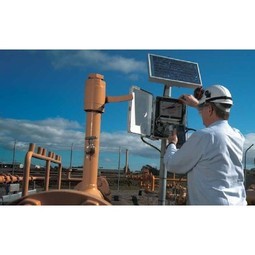Customer Company Size
Large Corporate
Region
- America
- Asia
- Europe
Country
- United States
- China
- France
- Germany
- Japan
- Netherlands
- United Kingdom
Product
- LonWorks platform
- LNS management system
- Versant embedded object-oriented database
Tech Stack
- Object-oriented programming
- C++
Implementation Scale
- Enterprise-wide Deployment
Impact Metrics
- Productivity Improvements
- Brand Awareness
Technology Category
- Application Infrastructure & Middleware - Database Management & Storage
Applicable Industries
- Electronics
- Transportation
- Utilities
Applicable Functions
- Discrete Manufacturing
- Product Research & Development
Use Cases
- Building Automation & Control
- Fleet Management
- Predictive Maintenance
Services
- Software Design & Engineering Services
- System Integration
About The Customer
Echelon Corporation is a pioneer and world leader in control networks and embedded control networks, which connect machines and other electronic devices. They created the LonWorks platform, an extremely robust, flexible, and expandable standards-based control networking platform and ecosystem upon which manufacturers can build products and applications with unparalleled reliability, security, operational integrity, flexibility, and bottom-line value. LonWorks is the world’s most widely adopted standard for automating everyday devices and systems. Hundreds of millions of people have experienced a LonWorks based control network. They’re used everywhere – from the Louvre to the New York City subway system to Rhoponghi Hills in Tokyo – to create control applications that make our lives more comfortable, convenient, and safe.
The Challenge
Echelon is a pioneer and world leader in control networks and embedded control networks, which connect machines and other electronic devices. They needed an embedded database compatible with the object-oriented application model. A predecessor of LNS was introduced in 1991, using procedural code and an embedded record oriented/ relational data storage toolkit. As object-oriented programming began to emerge, the team realized that using object-oriented programming was the most productive way to add features and power to the system. At the same time, the team realized that the record oriented storage toolkit was an obstacle to object-oriented development and a big usability problem because it exposed the embedded database structure to their broad OEM programmer community.
The Solution
Versant embedded object databases are capable of handling the 70+ application classes, with up to 32,000 device instances on one network, including deep inheritance hierarchies, complex relationships among application objects, and high performance to store and retrieve a persistent network size of several hundred megabytes. Echelon estimates that using the Versant database resulted in a six month advantage in time to market, and saved several “developer years” while simultaneously enabling the team to implement more powerful features. In addition, there are significant ongoing developer productivity gains when enhancing and maintaining the code base.
Operational Impact
Quantitative Benefit

Case Study missing?
Start adding your own!
Register with your work email and create a new case study profile for your business.
Related Case Studies.

Case Study
IoT Solutions for Smart City | Internet of Things Case Study
There were several challenges faced: It is challenging to build an appliance that can withstand a wide range of voltage fluctuations from as low at 90v to as high as 320v. Since the device would be installed in remote locations, its resilience was of paramount importance. The device would have to deal with poor network coverage and have the ability to store and re-transmit data if networks were not available, which is often the case in rural India. The device could store up to 30 days of data.

Case Study
Remote Temperature Monitoring of Perishable Goods Saves Money
RMONI was facing temperature monitoring challenges in a cold chain business. A cold chain must be established and maintained to ensure goods have been properly refrigerated during every step of the process, making temperature monitoring a critical business function. Manual registration practice can be very costly, labor intensive and prone to mistakes.

Case Study
Automation of the Oguz-Gabala-Baku water pipeline, Azerbaijan
The Oguz-Gabala-Baku water pipeline project dates back to plans from the 1970’s. Baku’s growth was historically driven by the booming oil industry and required the import of drinking water from outside of the city. Before the construction of the pipeline, some 60 percent of the city’s households received water for only a few hours daily. After completion of the project, 75 percent of the two million Baku residents are now served around the clock with potable water, based on World Health Organization (WHO) standards. The 262-kilometer pipeline requires no pumping station, but uses the altitude differences between the Caucasian mountains and the capital to supply 432,000 m³/d to the Ceyranbatan water reservoir. To the people of Baku, the pipeline is “the most important project not only in 2010, but of the last 20 years.”

Case Study
GPRS Mobile Network for Smart Metering
Around the world, the electricity supply industry is turning to ‘smart’ meters to lower costs, reduce emissions and improve the management of customer supplies. Smart meters collect detailed consumption information and using this feedback consumers can better understand their energy usage which in turn enables them to modify their consumption to save money and help to cut carbon emissions. A smart meter can be defined in many ways, but generally includes an element of two-way communication between the household meter and the utility provider to efficiently collect detailed energy usage data. Some implementations include consumer feedback beyond the energy bill to include online web data, SMS text messages or an information display in consumers’ premises. Providing a cost-effective, reliable communications mechanism is one of the most challenging aspects of a smart meter implementation. In New Zealand, the utilities have embraced smart metering and designed cost effective ways for it to be implemented. The New Zealand government has encouraged such a move to smart metering by ensuring the energy legislation is consistent with the delivery of benefits to the consumer while allowing innovation in this area. On the ground, AMS is a leader in the deployment of smart metering and associated services. Several of New Zealand’s energy retailers were looking for smart metering services for their residential and small business customers which will eventually account for over 500,000 meters when the multi-year national deployment program is concluded. To respond to these requirements, AMS needed to put together a solution that included data communications between each meter and the central data collection point and the solution proposed by Vodafone satisfied that requirement.

Case Study
Airport SCADA Systems Improve Service Levels
Modern airports are one of the busiest environments on Earth and rely on process automation equipment to ensure service operators achieve their KPIs. Increasingly airport SCADA systems are being used to control all aspects of the operation and associated facilities. This is because unplanned system downtime can cost dearly, both in terms of reduced revenues and the associated loss of customer satisfaction due to inevitable travel inconvenience and disruption.








